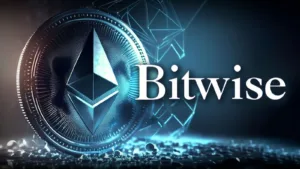Ethereum (ETH), the second-largest cryptocurrency by market cap, is navigating a complex landscape as market forces, regulatory developments, and technical upgrades impact its trajectory. Despite recent breakthroughs like spot ETFs and network enhancements, ETH’s performance remains a mixed bag, leaving investors and analysts on edge.
Ethereum ETFs Underperform in U.S. Markets
The launch of Ethereum spot ETFs in the U.S. was initially hailed as a game-changer for mainstream adoption. However, the reception has been far from stellar. Despite the approval of nine Ethereum ETFs in July, these products have struggled to attract demand.
James Seyffart, an analyst at Bloomberg Intelligence, recently admitted, “I was way too bullish,” highlighting the market’s muted response during a panel at the Permissionless Crypto conference. Data from Glassnode shows that 61% of daily flows for Ether ETFs have been negative, and total outflows have reached $546 million, according to Farside Investors. Even BlackRock, the world’s largest asset manager, has acknowledged the challenges ETH ETFs face.
In sharp contrast, Bitcoin spot ETFs saw $12 billion in inflows within their first quarter, underscoring a stark difference in investor sentiment. This underperformance has prompted the U.S. Securities and Exchange Commission (SEC) to delay decisions on options listings for Ethereum ETFs. The review period for Cboe’s ETF proposal has been extended from October 19 to December 3.
Brighter Prospects Outside the U.S.
While the U.S. market falters, other regions are showing promise. Australia debuted its first Ethereum ETF on October 15, with Monochrome’s Ethereum ETF (IETH) attracting $176,600 in assets under management. The launch follows the success of the firm’s Bitcoin ETF, which amassed $10.7 million since June.
Jeff Yew, CEO of Monochrome, remains optimistic, suggesting that Australia’s approach to crypto ETFs could diverge positively from the U.S. “We may take a different trajectory,” Yew noted, hinting at growing regional interest in Ethereum-based products.
Despite the ETF setbacks, Ethereum’s price action remains robust. ETH recently broke past a critical resistance level of $2,500, rallying over 5% to trade above $2,550, surpassing the 100-hour Simple Moving Average (SMA). Technical indicators point toward bullish momentum, with a key trend line forming support around $2,520.
If ETH manages to breach resistance at $2,620 and $2,650, the next target could be $2,720, followed by $2,800. However, failure to sustain momentum may trigger a pullback, with support levels at $2,600 and $2,520. A dip below these levels could push prices down to $2,450 or even $2,400.
Vitalik Buterin’s Vision for a More Decentralized Network
Ethereum’s co-founder Vitalik Buterin continues to champion decentralization. He recently proposed lowering the staking threshold from 32 ETH to just 1 ETH, making staking more accessible and enhancing network participation. Additionally, Buterin introduced a proposal for “single-slot finality,” which could slash block finalization times from 15 minutes to 12 seconds, further optimizing Ethereum’s performance.
Also Read: Uniswap’s Unichain Launch Shifts $500M In Fees From Ethereum—UNI Holders Poised For Big Gains
Ethereum’s journey remains intricate, with ETF underperformance in the U.S. casting a shadow over the network’s progress. However, regional optimism in Australia and key technical upgrades are keeping the altcoin on solid ground. With Vitalik Buterin’s proposals aiming to improve decentralization and efficiency, Ethereum’s future will depend on whether it can navigate these mixed signals and maintain investor confidence.
Investors will be watching closely as the SEC’s next move approaches, with the potential for ETH to gain momentum—if the right catalysts align.
Disclaimer: The information in this article is for general purposes only and does not constitute financial advice. The author’s views are personal and may not reflect the views of Chain Affairs. Before making any investment decisions, you should always conduct your own research. Chain Affairs is not responsible for any financial losses.



